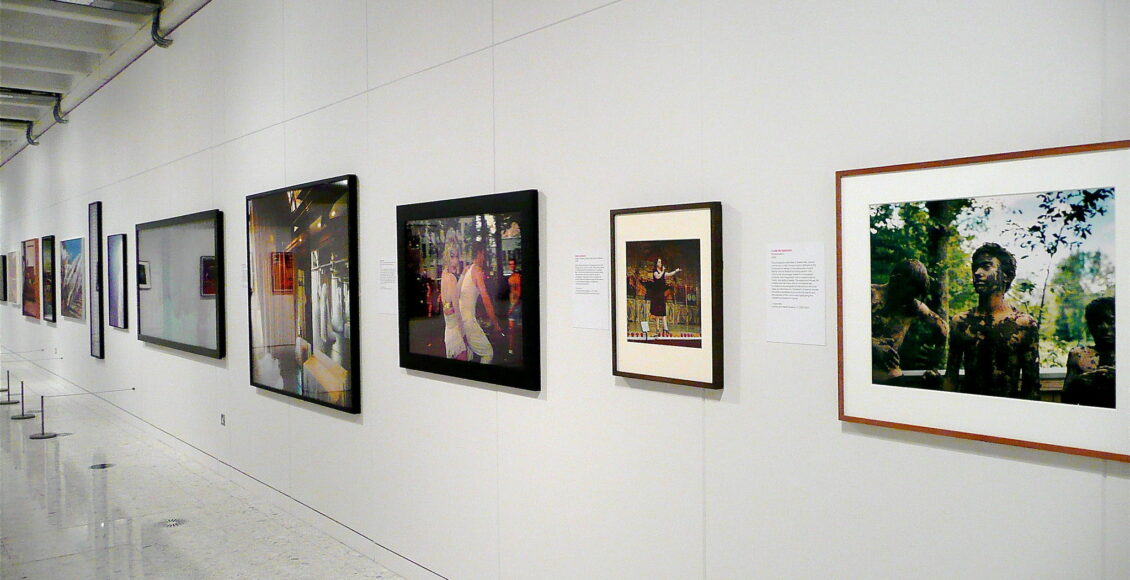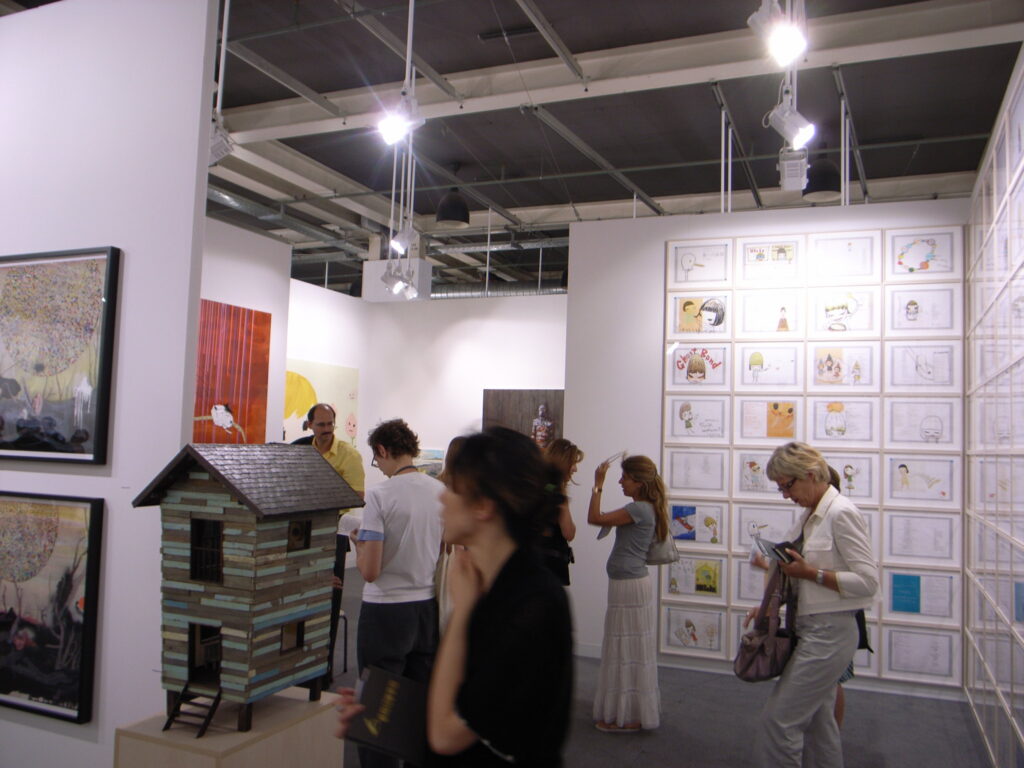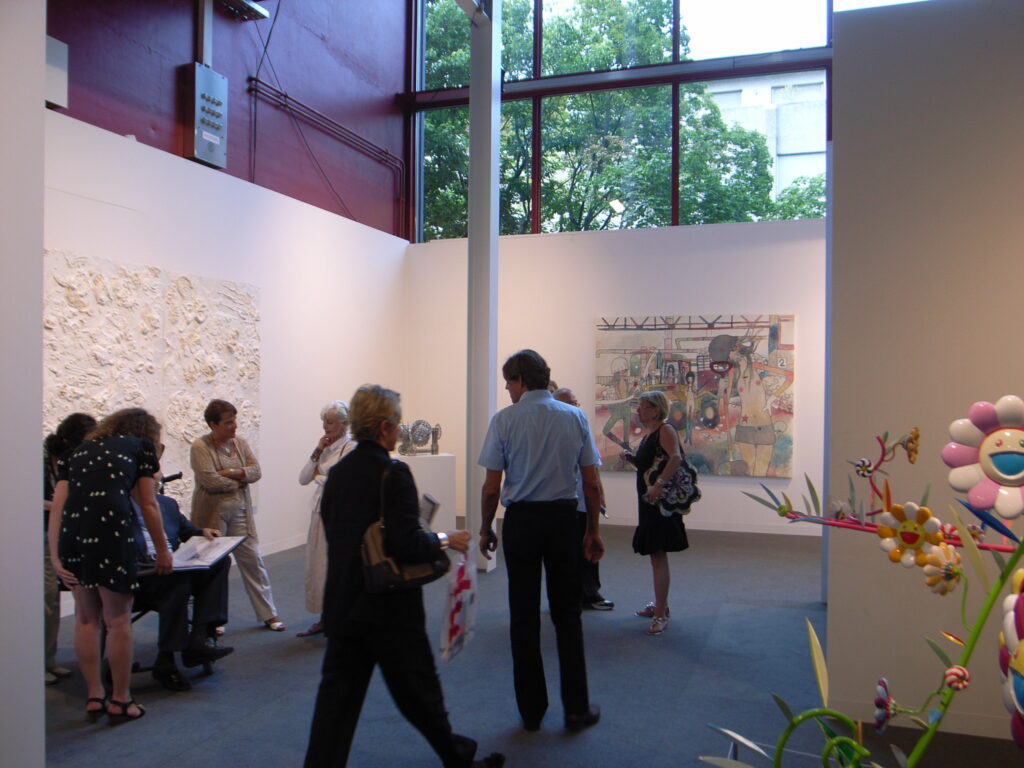Galleries on Lockdown: COVID-19 and Digitization of the Art Market

The art market was shaken by frenzy in early spring as social distancing guidelines kicked in, requiring vendors to perform the entirety of their business digitally and leaving in-person gallery exhibitions and international art fairs to be replaced by a landscape of virtual art spaces. The outbreak has consequently expedited the art market’s technological modernization.
Economist Paul Donovan explains the situation in terms of the health crisis consolidating structural changes that were “going to happen anyways” such as “online retail, flexible working and localization of production” among others. At the pandemic’s onset, these shifts coalesced into an impressive intra-gallery race to launch “online viewing rooms” (OVRs), technology first employed by mega-gallerist, David Zwirner in 2017. Nevertheless, a discussion of these unprecedented changes must be contextualized in an industry notorious for its resistance to innovate. The 2020 Art Basel Global Art Market analysis reports that “despite a rapidly growing volume of sales in the last 10 years, the art market has lagged behind other industries in terms of its online share by value.” Yet, in the immediate period following lockdown, the art market proved to be faring quite well amidst the pandemic conditions relative to equity markets and other luxury goods markets. Virtual auction sales revenues reached surprising highs in this time, as in the case of Sotheby’s record breaking $13.7 million USD online contemporary day sale from early May, and their $363.2 million USD grossing first-edition hybrid contemporary evening sale just a month later.

In Global Director of Art Basel, high priest of the fair sector Marc Speigler’s words, “a utopian meme started circulating” in context of the pandemic. As more accredit the lockdown-era move towards e-commerce for the industry’s financial resilience through the crisis, the prediction of a permanently altered art sale business model towards full digitization has begun to run rampant.
However, the economic potential of online markets did not become apparent solely in light of mass quarantines. Arguing the profitability of e-commerce platforms has been the economically sound position for years. Talk of a stagnating art market has permeated dealers’ discussions since the Great Recession, due to a recorded drop of sales figures since 2008. This has forced strategists to rethink their business tactics regarding the invitation of new collectors, the market’s preeminent drivers.
In 2017, for example, former tech bro-turned–gallerist Wendie Norris did away with her brick and mortar showing room entirely, noting her gallery’s sales analyses that demonstrate only a tenth of her total revenues originated from the physical space. This is a very dramatic example of what steps gallerists are taking to address the above-mentioned market failures as many have simply increased their volumes of so-called “.PDF sales”. These transactions take place over email and, unsurprisingly, rely on the exchange of .PDF documents regarding a given dealer or gallery’s inventory, a strategy that is ultimately only a level below entertaining a full-blown e-commerce platform. Increasing online sales in the lockdown era are being read then by pro-digital players as the mere heightened use of a proven solution (e.g. digital) to an only worsening financial issue in the industry.
The Artsy Online Collector Report of 2019 framed rising investments into pre-COVID digital infrastructure as a means to invite buyers whose profiles contrast in nature from those of traditional offline collectors. The difference is largely centered around spending habits. Whereas the offline mega-collectors would often purchase works after only hearing the sales pitch of a gallerist, offline buyers prefer to consult a myriad of independent, pre-dominantly online resources concerning their desired piece before contacting the dealer.
The paradox arises when maximizing profits (i.e. welcoming new buyers) does not correspond with the goals of certain art world titans. A call for the supposed “democratization of the art market” threatens the consolidation of a relational, as opposed to a flatly hierarchal, network of power and influence. In art journalist Tim Schneider’s 2017 book, The Great Reframing: How Technology Will–and Won’t–Change the Gallery System Forever, he reports that “The most successful gallerists constantly manage a complex web of interconnected relationships […] we’re left with a market where a gallerist might rather sell a piece to the Guggenheim for $75,000 [USD] than to an unknown collector for $200,000 [USD]. The decision looks nonsensical from a financial standpoint, but in context […] it makes perfect sense.”

Such preferential tendencies qualify the art industry as a matching market. Since the controversy jeopardizes revenues, dealers are inclined to withhold sales information in order to protect their clients’ sense of privacy and “insider specialness” according to Schneider. In short, the economic pursuit of new buyers equates to the market’s contamination by lower status clientele, who, to borrow the phrasing of Alexander Forbes, marketplace strategist at Artsy, “may genuinely have to consider whether they can afford the work they’re passionate about and if it will hold its value over time.”
Another important question to address is that of price transparency, a term connected to, but not nearly synonymous with “online”. Displaying artwork prices publicly was not a common practice until the growth of digital sales platforms. But like e-commerce, public pricing is increasing in frequency and controversy alike. This is significant particularly in light of the pandemic, as virtually all gallerists are faced with the decision of whether to be public, or to list their artworks with a “contact for price” button on e-commerce sites. The data has, for years, proven the lucrativeness of public pricing and conversely, the financial disadvantages of informational asymmetry. Artsy analyses have found that the chances of an online inquiry producing a sale was four to nine times more likely when the artwork’s price was listed. And The 2019 Artsy Online Collector Report concluded that non-public access to artworks’ prices was the most significant hindrance to buying more art reported by collectors.
Now, with the forced digitization brought on by COVID-19, all these pre-existing tensions regarding e-commerce and price transparency are being exacerbated. While the “utopian meme-ers” push for the fully online business model to prevail post-lockdown, another portion of the art world yearns to restitute the market in its “pure” state of lavish art fairs and gallery parties open only to a small elite of connoisseurs. This does not mean compromise is untenable, or that there aren’t moderate voices in the art world altogether. Rather, the extremes are being pushed — or perhaps, merely articulated for the first time in an industry renowned for its diplomatic secrecy. These changes in the art market mirror the question of digitization’s impact on other industries, and how markets will be forced to adapt their existing issues to account for the new obstacles COVID-19 presents.
The featured image by Herry Lawford is licensed for use under CC BY 2.0.
Edited by Elizabeth Hurley
